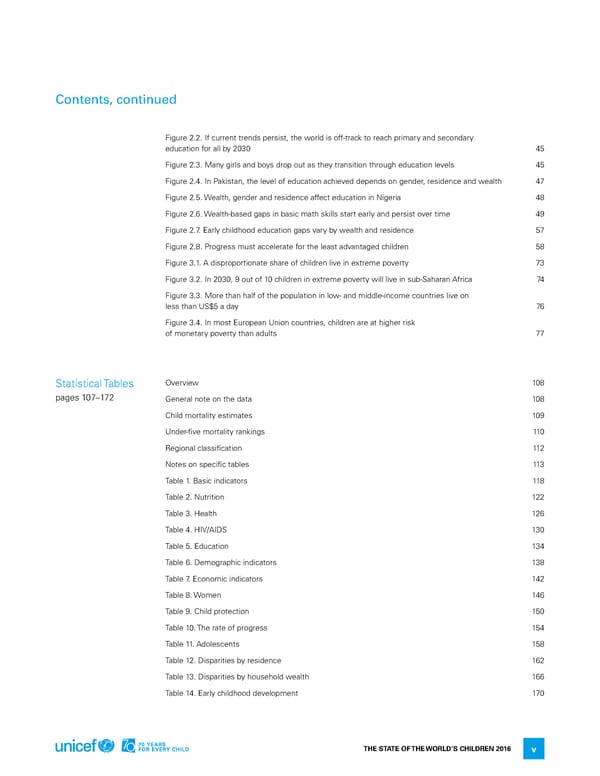Contents, continued figure 2.2. if current trends persist, the world is off-track to reach primary and secondary education for all by 2030 45 figure 2.3. Many girls and boys drop out as they transition through education levels 45 figure 2.4. in Pakistan, the level of education achieved depends on gender, residence and wealth 47 figure 2.5. Wealth, gender and residence affect education in nigeria 48 figure 2.6. Wealth-based gaps in basic math skills start early and persist over time 49 figure 2.7. early childhood education gaps vary by wealth and residence 57 figure 2.8. Progress must accelerate for the least advantaged children 58 figure 3.1. a disproportionate share of children live in extreme poverty 73 figure 3.2. in 2030, 9 out of 10 children in extreme poverty will live in sub-Saharan africa 74 figure 3.3. More than half of the population in low- and middle-income countries live on less than US$5 a day 76 figure 3.4. in most european Union countries, children are at higher risk of monetary poverty than adults 77 Statistical Tables overview 108 pages 107–172 General note on the data 108 Child mortality estimates 109 Under-five mortality rankings 110 regional classification 112 notes on specific tables 113 Table 1. Basic indicators 118 Table 2. nutrition 122 Table 3. health 126 Table 4. hiV/aidS 130 Table 5. education 134 Table 6. demographic indicators 138 Table 7. economic indicators 142 Table 8. Women 146 Table 9. Child protection 150 Table 10. The rate of progress 154 Table 11. adolescents 158 Table 12. disparities by residence 162 Table 13. disparities by household wealth 166 Table 14. early childhood development 170 The STaTe of The World’S Children 2016 v
 70 Years for Every Child Page 8 Page 10
70 Years for Every Child Page 8 Page 10